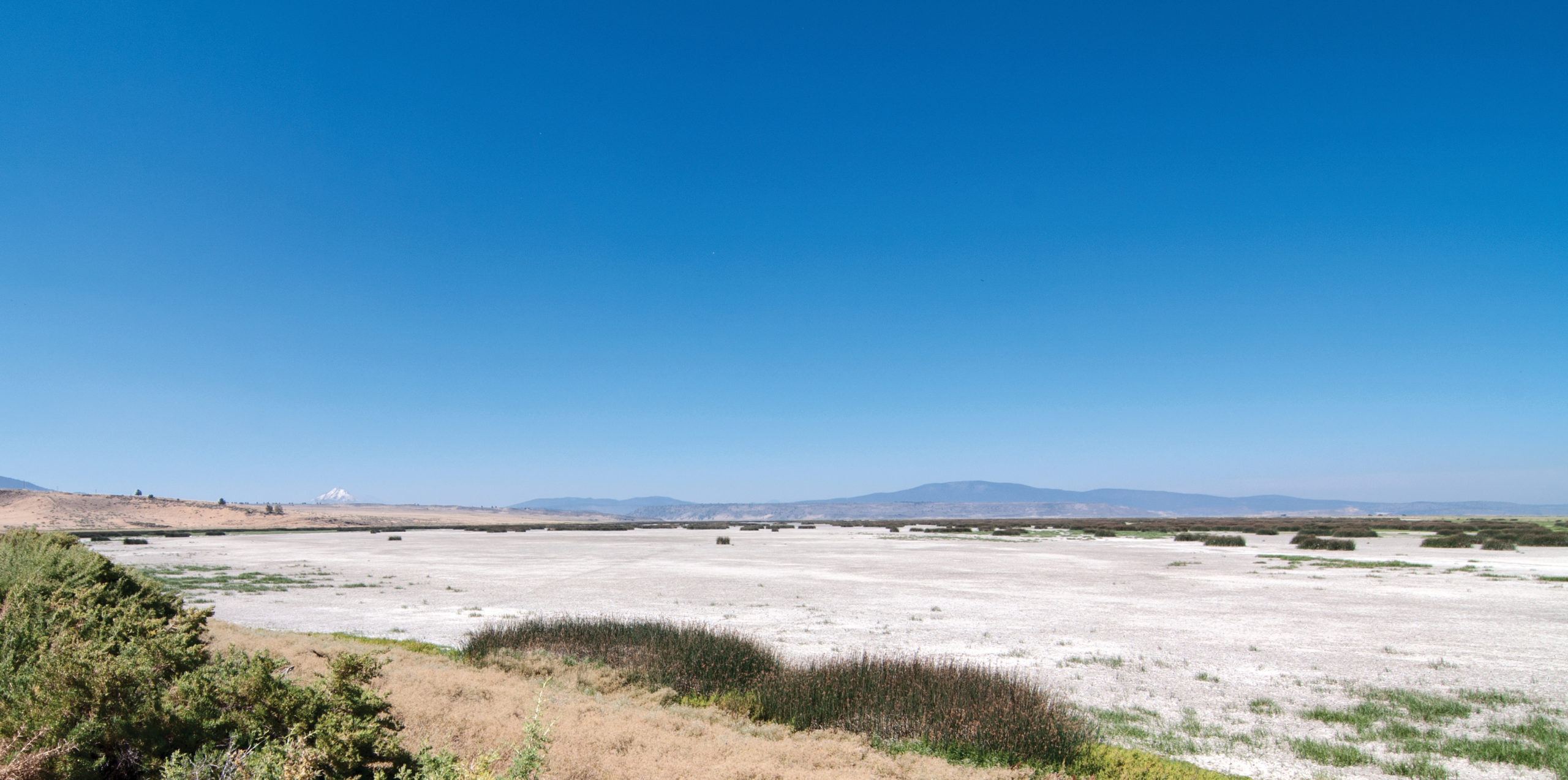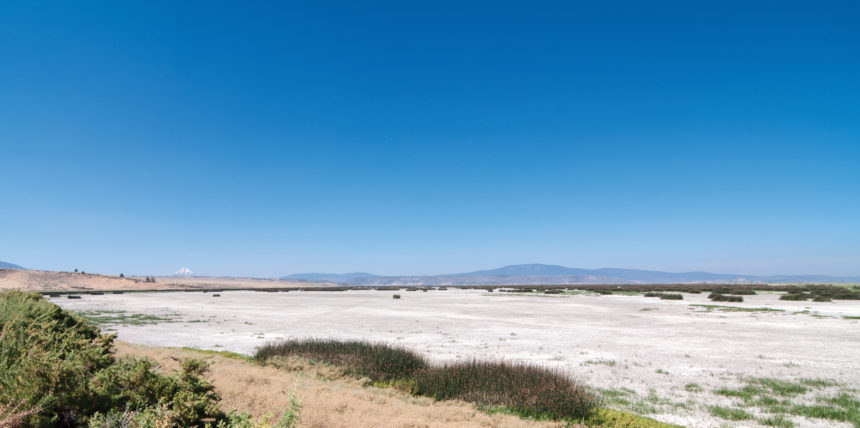
Jun 4, 2020
WATER: Lower Klamath Refuge left high and dry

The Lower Klamath National Wildlife Refuge is located in the northeast part of the state, but it’s vitally important to duck hunters across the Pacific Flyway. The 50,092-acre refuge historically has provided critical habitat to ducks and geese during all stages of their life cycle. FILE PHOTO
BY JEFFREY A. VOLBERG, DIRECTOR OF WATER LAW AND POLICY
(Originally published in the Summer 2020 issue of California Waterfowl)
The Lower Klamath National Wildlife Refuge is facing another year of drought. A dry winter and spring have left the Klamath Basin with 55% of its normal water supply. The Klamath Project, which supplies irrigation water to farmers in the Klamath Basin, will get approximately 25% of its full supply for the irrigation season. Farmers, fish and waterfowl will be competing for a diminished supply of water.
Like few others, the refuge is extremely important to hunters all over California. Approximately 80 percent of the Pacific Flyway’s migrating waterfowl pass through the Klamath Basin on both spring and fall migrations. And 50% of the population use this refuge, according to the U.S. Fish and Wildlife Service. Many of the resident ducks in the Central Valley breed and molt at the Lower Klamath and Tule Lake refuges. A water supply problem for the Lower Klamath refuge is a problem for the entire Pacific Flyway.
ANY GOOD NEWS?
Recently there have been three positive developments that may help avoid a repeat of the 2018 disaster when the refuge nearly ran dry.
1. The U.S. Fish & Wildlife Service completed a permanent water-rights transfer from above Upper Klamath Lake that will provide water to the refuge through the summer months. This has the benefit of flooding Unit 2, a main sanctuary wetland that must flood before other units can receive water.
2. The governors of both California and Oregon applied for drought-relief funding that would allow them to purchase water from farmers for the refuge. The local irrigation districts expect to receive $8-9 million, which must be used to benefit fish and wildlife. Although the money is available, it does not appear, as of early May, that any water will be provided to the refuge in 2020 by this means.
3. Four large pumps and wells on the refuge are slated to be repaired and upgraded. California Waterfowl’s Northern California biologist, Greg Heydeman, catalogued the needed repairs and applied for a grant to carry them out. The grant was denied, but the Fish & Wildlife Service found the money within its own budget and recently signed contracts to start the project. While these developments are good news, they are nowhere near what’s needed to secure long-term water security for the refuge and its waterfowl.
FIGHTING FOR ITS LIFE
In 1906, Lower Klamath Lake was drained to create 80,000 acres of farmland. There was little thought or concern about how this would hobble migrating waterfowl. A federal reclamation project was established to provide irrigation water for the farmland. The project used water out of the Klamath River that would formerly have flowed as flood water into the Lower Klamath Lake.
Two years later, the refuge was established to protect the crops from the millions of ducks and geese that arrived every fall. Parts of the refuge, especially land north of the California-Oregon border, were given agricultural water rights and contracts to receive water from the Klamath Reclamation Project. The rest of the refuge was supplied with excess water that was not needed by the Project. Adjacent to the Lower Klamath lake and refuge, but separated by Sheepy Ridge, is the Tule Lake National Wildlife Refuge. About half of Tule Lake was drained to create farmland, but two large “sumps” remained. The sumps collected the excess snowmelt runoff in the spring and the tailwater from the irrigated farms in the fall. When water from the sumps began to back up onto the farmland, the excess water was pumped “through the hill” onto the Lower Klamath refuge.
NOT ALL DROUGHT IS NATURAL
Between the return flows and excess water from the Klamath Project and the water pumped through the hill, the refuge had a generally sufficient water supply until 2001. But then the federal government shut off water entirely from the Klamath Project. The justification was the protection of shortnose and Lost River suckers, which were listed as endangered under the federal Endangered Species Act, and the coho salmon, which were listed as threatened.
The shutdown resulted in widespread protests in the Klamath Basin, including an armed confrontation between farmers and federal law enforcement. The farmers had used acetylene torches to cut chains and open the valves on the A Canal to release water for their farms.
Besides wreaking havoc on the 1,400 farms on 225,000 acres in the Klamath Project, shutting down the water supply also left the Lower Klamath National Wildlife Refuge literally high and dry for the summer and fall.
Another blow to the refuge’s water supply came in 2006 when the electric power contract that supplied electricity to the Tule Lake Irrigation District expired. The 50-year contract had locked in a price of 6 cents per kilowatt hour. When the contract expired, the price of electricity soared to the current market price. The cost became prohibitively expensive to pump water through the hill from Tule Lake to the Lower Klamath refuge. Pumping through the hill used to provide 75% of the refuge’s water supply. That dropped to less than half.
In another troubling turn, in 2017, a federal court in San Francisco ruled against the Bureau of Reclamation in a lawsuit brought by the Yurok tribe. The court ordered the Bureau to hold back 50,000 acre-feet of water to provide flows in the Klamath River for coho salmon until the Bureau adopted a biological opinion, that is, an official document used to establish what the government must do to aid endangered species, such as coho salmon in the Klamath River and the Lost River and shortnose suckers in Upper Klamath Lake.
As a result, the Lower Klamath refuge received no water from the Klamath Project in the summer and fall of 2018. The extensive wetlands were turned into desert. California Waterfowl employees observed newly hatched ducklings struggling over a mile across baked mud to reach brood water. Many died. How many? We do not know. The fall migration had the fewest birds since records have been kept: 150,000 ducks and geese, where there were usually 2 million birds at peak migration.
In 2019, the Yurok tribe again sued the Bureau of Reclamation under the Endangered Species Act. The lawsuit sought an injunction to reinstate the 50,000 acre-foot requirement. California Waterfowl filed an amicus brief describing the impact of the 2017 injunction on bird numbers in 2018. This year, the Bureau and the Yurok tribe settled the lawsuit. The Bureau will have to hold back 40,000 acre-feet, which will reduce the amount of water available to the refuge in the future. One benefit of the settlement is that the Bureau will have until 2022 to complete a new operations plan. That’s good news because it will give California Waterfowl time to advocate for getting the refuge’s important water-supply needs into the new biological opinions.
At the end of March, the Bureau told the Project farmers they would receive 140,000 acre feet of water for the irrigation season, less than half the normal Project supply of 350,000 acre feet. Many farmers planted their fields based on that number. On May 8, however, the Bureau told the Project farmers that they would only receive 80,000 acre feet for the season, and they had already used over 20,000 acre feet. This means that most farmers who have planted crops will run out of water by July. Those who have pumps can supplement their water, but running pumps is expensive. The effect this will have on the refuge is not clear, but it is probable that most of the refuge will dry up over the summer and will be dry at least until November.
CWA will post updates in this situation here. If you would like more information about California Waterfowl’s efforts in the Klamath Basin, contact Jeffrey Volberg at jvolberg@calwaterfowl.org or 916-217-5117.


